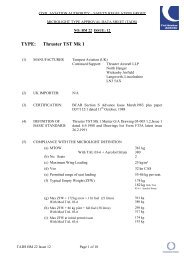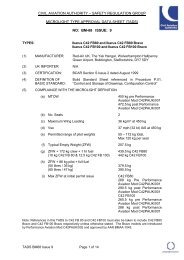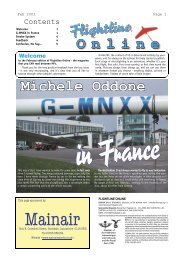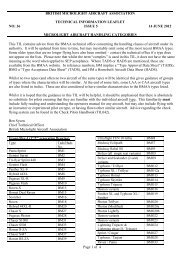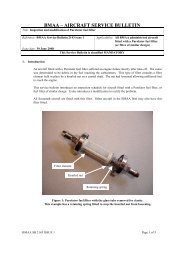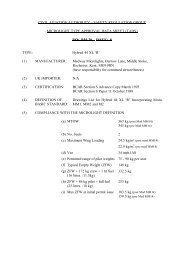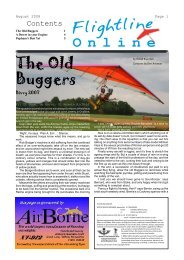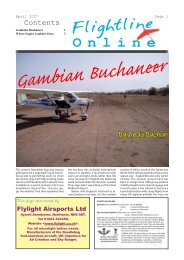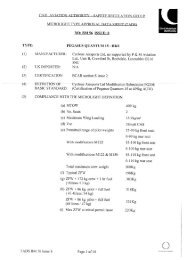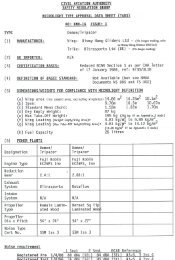French Kiss - British Microlight Aircraft Association
French Kiss - British Microlight Aircraft Association
French Kiss - British Microlight Aircraft Association
You also want an ePaper? Increase the reach of your titles
YUMPU automatically turns print PDFs into web optimized ePapers that Google loves.
There is a serious point about fuel and cockpit loads which applies not only to the review<br />
machine, but any fitted with tanks larger than the 50 litre maximum allowed under the old<br />
regulations. Some voices will raise objection that the fitting of big tanks as standard<br />
encourages people to fly overloaded machines. Using the example of the <strong>Kiss</strong> 400, a<br />
combined pilot and passenger weight of 180kg leaves an allowable fuel volume of just 27<br />
litres without exceeding the 400kg MTOW limit. The doubters say that pilots will inevitably fly<br />
two-up and fuelled over the weight limit.<br />
I would answer that decisions on cockpit load/fuel weight trade-offs affect every branch of<br />
aviation and there is no reason as to why microlights should be made a special case for<br />
concern. I personally do most of my flying one-up and all the more safely for having a<br />
purpose-designed single tank of adequate capacity. Complicated multi-tank fuel<br />
arrangements have caused serious problems for pilots in the past and it is my view - offered<br />
with the benefit of 17 years experience flying flexwing microlights - that the new regulations<br />
take flight safety forwards, not backwards.<br />
We are quite aware that overloading is neither safe or sensible: heavy loads adversely affect<br />
takeoff roll/climbout, particularly on soft grass strips, and primary flight characteristics -<br />
especially in parts of the envelope towards the stall.<br />
The Trike<br />
The first - and lasting - impression is of design excellence. The beautifully moulded fairings<br />
partially conceal a fairly simple tube and bolt structure in which the individual tube members<br />
have been factory finished in a hard coat paint to match the mouldings. The single drum<br />
brake arrangement on the sprung front wheel is the same adaption from a motor scooter as<br />
currently fitted to Pegasus trikes.<br />
The unbraked rear wheels inside finned spats - these assist lateral flight stability as well as<br />
keeping flying stones away - are triangulated at the bottom of oleo suspension struts. They<br />
subsequently proved themselves to be soft enough to adsorb the bumps of taxiing without the<br />
rest of the machine wallowing around on over-soft suspension.<br />
The main wing pylon folds forward for (de)rigging, hinged at the top of the seat frame in the<br />
style of Pegasus Quasar trikes. This vastly improves design ergonomics over folding trike<br />
arrangements. It allows installation of large, permanently installed fuel tanks, a favourable<br />
trade between structural strength and weight and gets rid off that cow poo-collecting fabric<br />
'skirt' at the rear of the pod which make old <strong>British</strong> trikes look so shabby.




